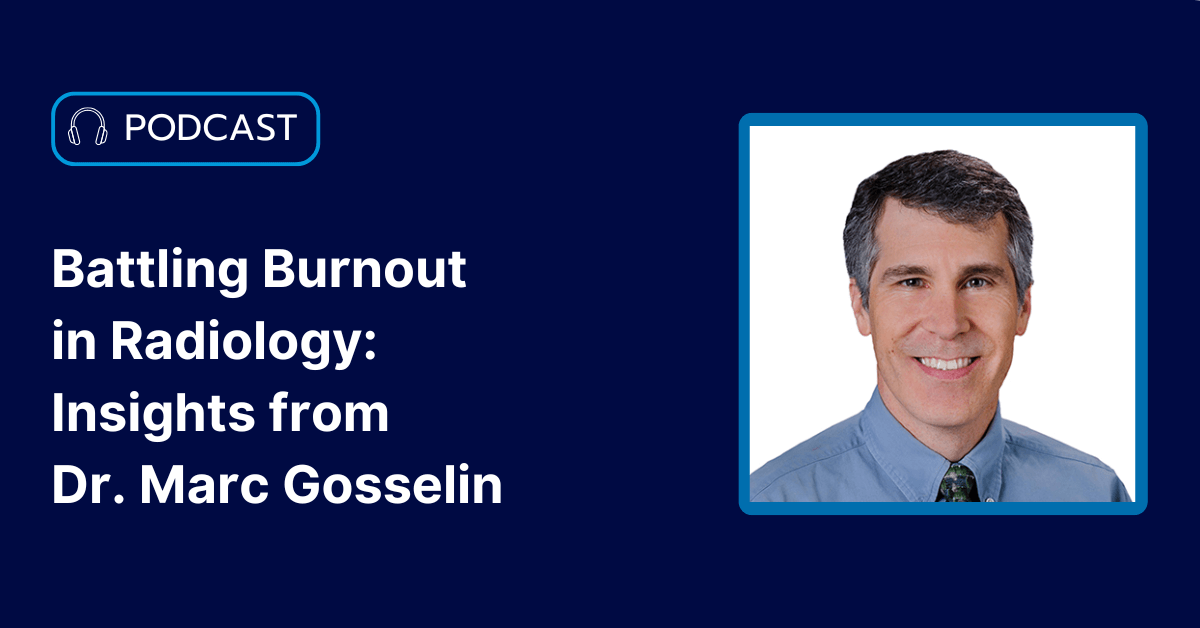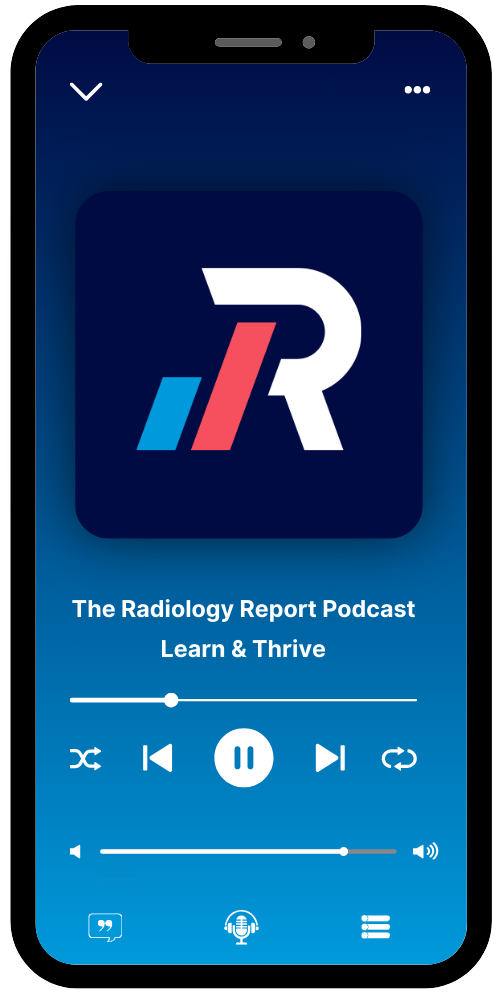Burnout is a prevalent issue in radiology, driven by increasing workloads, administrative burdens, and a sense of professional isolation. In a recent episode of The Radiology Report Podcast, guest speaker Dr. Marc Gosselin gave valuable insights on recognizing, addressing, and overcoming burnout. Here are some key takeaways that radiologists can apply to their own careers.
The Subtle Erosion of Purpose
One of the most striking perspectives from the episode is the idea that burnout doesn’t stem from just long hours or high exam volumes. Instead, it results from "thousands of tiny betrayals of purpose." Radiologists often feel like mere "cogs in the wheel" rather than valued members of the healthcare team. The shift from hands-on teaching to receiving impersonal pages saying "read this now" further distances them from meaningful engagement.
Rekindling Passion Through Change
A common theme in burnout recovery is the power of change. Over time, radiologists may find themselves disengaged from their specialty. In the episode, a shift from reading chest imaging to revisiting neuro and abdominal cases reignited professional excitement for Dr. Gosselin: "I was bored at chest. Now I’m doing neuro again… I kind of missed reading those." Recognizing when stagnation sets in and proactively seeking new learning opportunities can be revitalizing.
The Importance of Immediate Impact
Radiologists often feel disconnected from patient care, which can contribute to burnout. Dr. Gosselin highlights the contrast between reading studies in isolation and directly impacting patient outcomes. "When I was calling the ER doctor, telling them exactly what was going on… and they were acting on it right then, okay, that’s cool!" Finding ways to engage more with referring physicians and patient care can bring renewed fulfillment.
Feeling Valued Matters
One of the most overlooked contributors to burnout is the lack of appreciation.
A simple "thank you" can go a long way. "Nine out of ten times, the ER doctors or hospitalists say, ‘Thank you so much, really appreciate it.’ I had forgotten what it was like to feel appreciated." - Dr. Marc Gosselin
Seeking work environments where collaboration and recognition are part of the culture can make a significant difference.
Career Decisions Should Align with Lifestyle
Burnout is often exacerbated by work-life imbalance. Dr. Gosselin discusses the challenges of working nights, acknowledging the quiet and autonomy but also recognizing personal limitations: "Would I do this when I was 30? No way. But at my age now? Yeah, it’s a good job." Understanding personal needs at different career stages can help radiologists make informed job choices that sustain long-term career satisfaction.
Advice for Radiologists Facing Burnout
For those struggling with burnout, the episode offers practical advice:
- Monitor how you feel after work rather than rationalizing career choices based on prestige or expectations.
- Choose workplaces that fit your personality and goals. "Pick a place that speaks to you… where you see smiles on the residents' faces." - Dr. Marc Gosselin
- Consider staying in academia for a year or two if possible, as an environment for learning and making early-career mistakes.
- Telemedicine and teleradiology are viable options, but timing and personal readiness should guide the decision.
Burnout in radiology is real, but it is not inevitable. Finding ways to re-engage with the work, seeking appreciation, and aligning career choices with personal priorities can help radiologists sustain fulfillment. As the episode underscores, you will make yourself good. Taking ownership of career satisfaction is key to a rewarding and lasting career in radiology.
About Dr. Marc Gosselin
Dr. Gosselin completed medical school at McGill University, followed by a Radiology Residency at the University of Vermont. He then pursued a Fellowship in Cardiopulmonary Imaging at Stanford University.
He served on the faculty at the University of Utah, where he was the head of Chest Imaging from 1997 to 2001, and also directed both the Radiology and Medical Student Program. He continued his illustrious career at Oregon Health & Science University (OHSU), leading the Cardiopulmonary Imaging Division and the Radiology Program for medical students from 2001 to 2016.
Currently, he is a faculty member at Vision Radiology, where he continues to contribute to the field of medical imaging.




